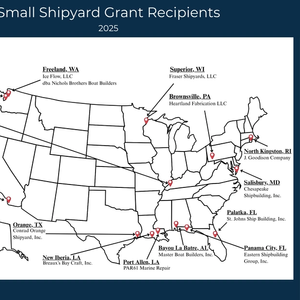
U.S. Transportation Secretary Sean P. Duffy has announced that the Maritime Administration (MARAD) has awarded $8.75 million in grants to revitalize U.S. shipyards and advance America’s maritime dominance.The funding is part of the Small Shipyard Grant program, which supports advanced training, workforce development and new technologies that strengthen U.S. shipbuilding and repair capabilities.
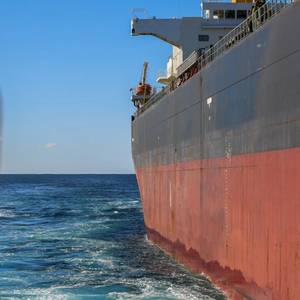
A.P. Møller Holding has, through its wholly owned subsidiary APMH Invest (APMHI), made an all-cash voluntary recommended purchase offer to the shareholders of Svitzer Group to acquire all issued and outstanding shares of the company.A.P. Møller Holding, through its wholly owned subsidiary APMHI, currently owns 47% of the share capital and voting rights of Svitzer.
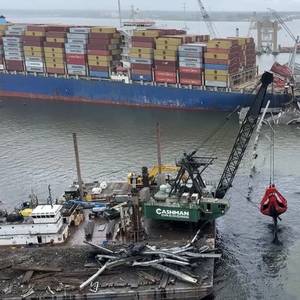
We are at the one-year since the Francis Scott Key (FSK) Bridge collapsed over the Patapsco River’s Fort McHenry Channel in Baltimore, Maryland. Nearly 100 percent of the wreckage and debris removal was conducted by the Jones Act private sector U.S. maritime industry. The FSK collapsed at about 1:28 a.m.

There’s plenty to go around for everyone, no matter it comes from.I will admit that attending the 2024 Workboat Show in the Big Easy just ten days after settling into the MarineNews Editor’s chair (for this, the second time around) had my full attention. The event typically evokes the specter of drinking from the proverbial fire hose in routine times

A new report published by DNV has revealed that the majority (61%) of maritime professionals believe the industry should accept increased cyber risk from digitalization if it enables innovation and new technologies.The sector’s appetite to take on emerging risks arising from digital transformation is notably higher than other critical infrastructure industries including energy
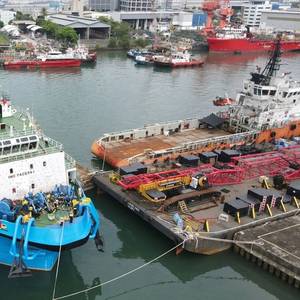
Singapore's offshore services firm Kim Heng has held a christening ceremony for the Bridgewater Discovery, a DP2 geotechnical survey vessel, rebuilt in 2024.With the Bridgewater Discovery vessel, Kim Heng has marked another milestone in its expansion into the renewable business sector.
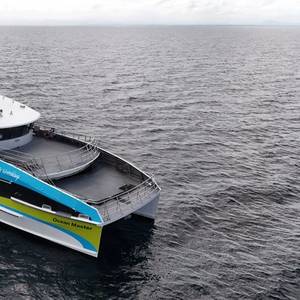
Austal Philippines delivered a 32m catamaran to Rottnest Fast Ferries, less than 12 months after commencing construction in Balamban, Cebu.Dubbed Ocean Master and designed by Incat Crowther, was officially accepted by representatives from Rottnest Fast Ferries following the successful completion of sea trials in November 2024.

Malicious cyber activity in the first six months in the maritime sector increased significantly compared to the previous year, highlighting the importance of introducing proactive security measures to stay ahead of ever evolving tactics of cyber criminals.Marlink recently released the latest global maritime cyber threat report produced by its Security Operations Center (SOC), which registered 23
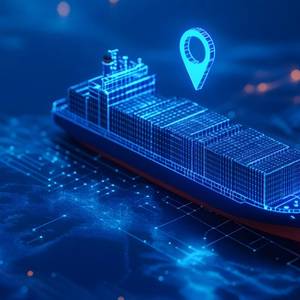
During the first half of the year, the threat landscape in the maritime environment has continued to evolve and surprise, compared to what was recorded in 2023.Marlink’s Security Operations Center (SOC) has reported that monitoring up to 1,800 vessels, adding visibility into events from endpoint protection solutions (EDR), firewalls, and e-mail security

Infostealers, a type of malware designed to steal sensitive information from an infected system, has marked significant rise in the first half of 2024 in the maritime domain, Marlink’s Security Operations Center (SOC) has reported.The whole process involves six steps – starting from initial infection to the exploitation of acquired data

Some of the key strategies to strengthen maritime cyber security include vigilance and proactive measures, timely incident reporting, and continuous improvement of security defenses, according to Marlink’s Security Operations Center (SOC) cyber security threats report.Vigilance and proactive measures are essential.

In the first half of 2024, the Threat Intelligence team within Marlink’s Security Operations Centre has observed several activities carried out by malicious actors targeting the maritime industry.These activities include phishing, where malicious actors sending fraudulent e-mails or messages try to trick individuals into revealing sensitive information like passwords or financial details.